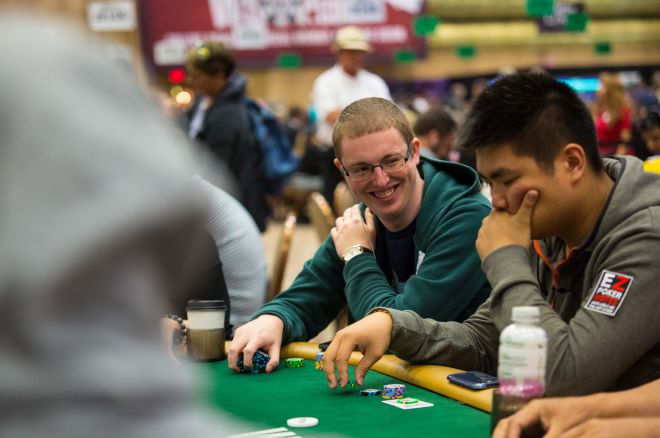Ryan's Poker Table #4
Convertible Round Poker & Dining Table with Convenient Storage, by RAM Game Room. Regular price $1,099.00 $949.00 On Sale. Convertible Round Counter Height Dining, Chess and Poker Table Set Vegas With 4 matching chairs by Sunset Trading. Regular price $4,852.00 $4,702.00 On Sale. Ryan's Poker Table Plans, lunch roulette software, poker terms see and raise, gambling casinos washington state. Uptown Aces Casino. Bridgeport 2-in-1 Poker Game Table Set with Four Chairs $ 1,175.00 Select options; Montecito Dining and Poker Table Set $ 1,395.00. Select options; Kingston Honey Oak 3-in-1 Poker Table and 4 Arm Chairs $ 1,550.00 Select options; Kingston Walnut 3-in-1 Poker Table and 4 Arm Chairs $ 1,695.00. Art Deco inspired poker table with black lamb skin leather framed top and satin brass scalloped base. Available in any custom finish and size. Lead time 10-12 weeks if not in stock.

Step 1 - Materials and Tools
$72 |
$26 |
$21 |
$48 |
$14 |
$16 |
$43 |
$9 |
$3 |
$5 |
$3 |
$5 |
$7 |
$8 |
$5 |
$7 |
$16 |
$306 |

- Circular Saw
- Hand held sander
- Electric Staple Gun
- Plate joiner kit
Step 2 - Cutting for each side of octogan
Step 3 - Cutting edge piece/molding
Step 4 - Gluing up each side of octogan
Step 5 - Cutting each side to correct length and angle
Step 6 - Cutting out for cup holder
Step 7 - Cutting out for chips storage
Step 8 - Dry Assembly
Step 9 - Gluing up final assembly
Poker Table Tops
Step 10 - Cut plywood base
Step 11 - Cutting out for cup-holders in plywood base
Step 12 - Router the top edges
Step 13 - Cut out centre octagon
Step 13 - Making the foot of the table.
Step 14 - Making the pedestal
Step 15 - Finishing
Step 16 - Attaching the top pedestal to the plywood base
Ryan's Poker Table
Step 17 - Cutting & gluing fabric in chip holder cut out
Step 18 - Ready to Play some Poker?
Card Player Magazine, available in print and online, covers poker strategy, poker news, online and casino poker, and poker legislation. Sign up today for a digital subscription to access more than 800 magazine issues and get 26 new issues per year!
There are many reasons to play poker, all of them are valid. Some play to gamble, some play to socialize, some play to make money, and some play for the exceptionally deep strategy of the game. If you fall under the last two categories, then this will be the series for you!
There used to be a common line of thinking that playing poker “by the book” wasn’t a fun way to play the game, as though doing so meant you couldn’t play a lot of hands, and had to play tight, or “boring” poker. This isn’t true at all!
Fundamentally-sound poker very strongly encourages you to play a lot of hands, and to play them with a level of aggression that many in the past would consider to be a bit reckless. The tough part, though, is that playing this style requires a very advanced understanding of the game in all aspects.
This series will give insight into each aspect of the fundamental approach that is required to play the game at a high level. Articles will include basic informative ones such as this, in-depth theory, and real hands I’ve played from high-stakes tournaments. My goal is to help you have the same respect, appreciation, and joy for the game and industry that I have.
Best Poker Tables
In this first article I am going to discuss the important decisions you need to make before you enter a game, and the main aspects of a hand of tournament poker.
Before you hand over the money needed to enter a tournament, you need to be confident about the following questions:
Why am I playing? – What is motivating you to play is an important part of how you should approach the game. Playing for fun or to socialize; or to play to make money or professionally, should dramatically impact how focused you are and how you approach your decisions at the table.
Do I have the time to play? – Tournaments take a long time and are a true commitment if you are going to win. Making money from them consistently takes a large amount of games played.
Can I afford to play? – I cannot overstate the immense amount of variance in tournament poker. If you are playing for fun you need to be able to be 100 percent okay with losing that money, and it can’t have a negative impact on any other aspect of your life to ANY degree. If you are playing seriously you need to be fully properly rolled for a tournament; One of my future articles will likely discuss bankroll management.
Ryan's Poker Table #4
How difficult is the tournament? – Will you feel outmatched in this field, and will you have an edge large enough to justify playing are important things to know if you desire to be a profitable player.
Am I mentally prepared to play? – Being in the right type of mindset; one focused on great decisions only and not on results, is a very important part of being successful at the table. If you can’t give the game the attention it needs in order for you to perform at a high level, you will learn quickly the steep cost of that mistake.
We asked the important questions above, and have concluded that we are able and willing to play. Now we have to be prepared to consider each of the following aspects of EVERY hand we play. Below are those key factors.
Stack Depths – How deep are you playing, how deep are your opponents. Your stack depth demonstrably dictates what types of hands you may play and how you may play them. Your opponents’ stacks do as well, and are an important consideration in any decision you make.
Ante Size – This greatly impacts how loose we can open and should be defending. The more that is out there to win the more we need to battle for it.
Number Of Opponents – How many players you are up against will affect how aggressively most people play and impact table dynamics.
Position – How many players left to act behind you, how likely you are to have position, and be heads-up, and steal the blinds, completely decides the range of hands you get to play. Where you opened from and where your opponent called from, or three-bet from, dictates what ranges you each will have, and how post-flop should be played.
Type Of Opponents – Are the players left to act loose, tight, passive, aggressive, are they professionals or amateurs? This is important information to know about each of your adversaries in every decision you make.
Image/History – How have you been playing at the table? How well do your opponents know you, what do they know about your game, and how well do you know them? Without considering this information you can easily make large mistakes.
Custom Poker Tables
Ability Of Opponents – This is the most important aspect to know about who you are up against in a hand and can entirely dictate how you approach your decisions.
Type Of Tournament – Does it have a good structure, or is it a turbo? Micro stakes or is it a High-roller? Is it an easy field or a tough one?
Stage Of Tournament – Whether in the early stages, the mid stages, the money bubble, late stages, the final table bubble, or the final table, every aspect of a hand is dictated by this information.
This may seem like a lot of information to have to worry about, and it is. Really having a good grasp on all of it will take a lot of time and experience at the table with a concentrated effort to excel at using it all. Once you become great at utilizing it there will be an increase in your ability to analyze the general aspects of the hand and give you more confidence in your decisions.
Thank you for reading this article. I wish you the best of luck at the tables! ♠
Ryan Laplante is a 2016 WSOP Bracelet winner. He has more than $4.5 million in tournament cashes with seven WSOP final tables. His website is PokerProtential.com, and he is a coach for Chip Leader Coaching